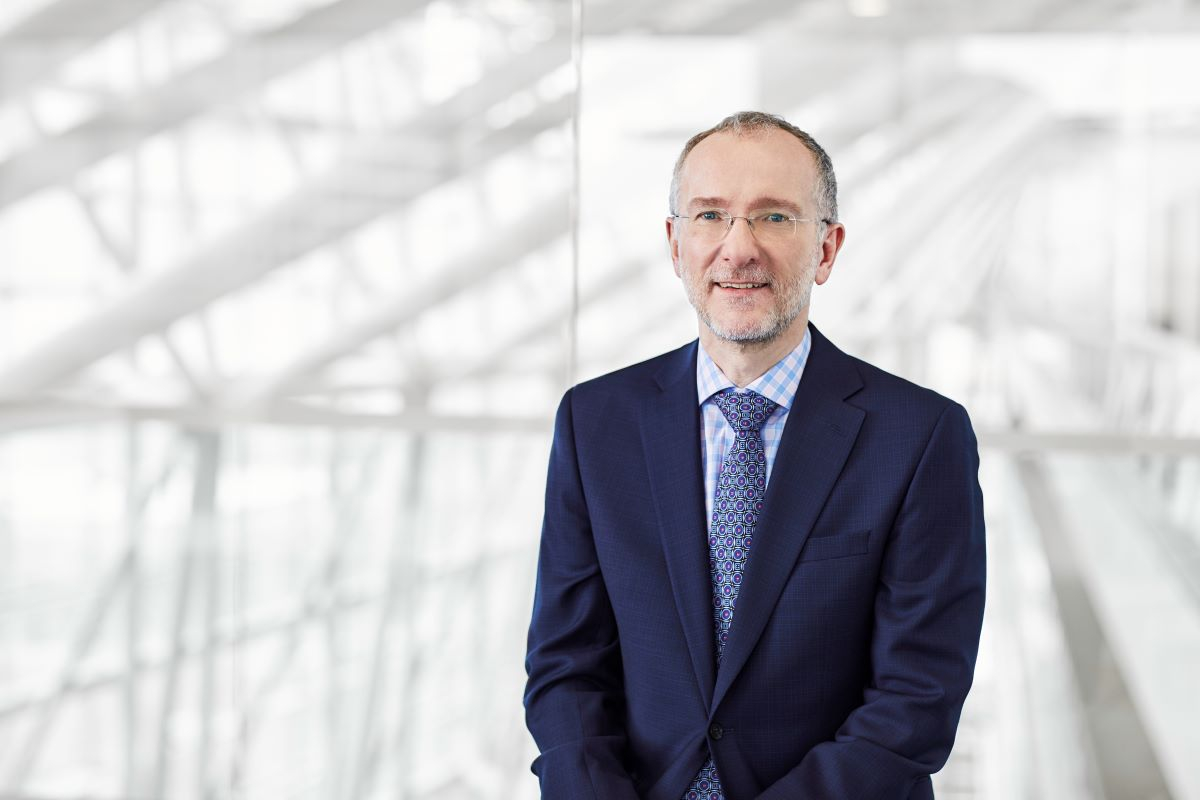This article is also available in Italian / Questo articolo è disponibile anche in italiano
Can a portfolio worth hundreds of billions of dollars be decarbonized? And under what conditions can we continue to invest in hard-to-abate sectors, the hardest to convert, such as cement and steel? Most importantly, what are the most effective strategies for driving lasting change within the organization? Renewable Matter posed these questions to Bertrand Millot, head of sustainability at Caisse de dépôt et placement du Québec (CDPQ), during the Sustainable Investment Forum North America in New York.
Created in 1965, CDPQ is a long-term institutional investor that manages funds primarily for public and quasi-public pension and insurance plans. A global investment group with presence in all major markets, CDPQ hasa portfolio of C$452 billion invested in private equity, equity markets, private credit, infrastructure and real estate. Millot is one of the architects of CDPQ's climate change strategy and an experienced investor in infrastructure and corporate debt in emerging markets.
How do you ensure that linking compensation to climate targets drives genuine long-term sustainability efforts, rather than simply incentivizing short-term, surface-level compliance?
We started in 2017 and we were among the first institutional investors globally to implement a climate strategy that encompassed the entire portfolio. We set a goal to achieve C$54 billion in low-carbon assets by 2025, based on the taxonomy of the Climate Bonds Initiative (CBI), one of the most rigorous standards worldwide. Additionally, we committed to decarbonizing the portfolio, setting targets which we have since updated and accelerated. A key aspect was linking the achievement of these goals to the compensation of everyone at CDPQ, not just the investment teams, for whom these targets were part of their bonus, but also other departments, such as IT. As a result, we gained support across the entire organization, which is now fully aligned with meeting these objectives.
Speaking of governance, how do you ensure that individual targets for investment teams don’t compromise the overall alignment with the company’s climate and sustainability objectives?
Addressing governance is crucial. Internally, we operate by giving the investment teams individual targets that align with their specific business models. We're not enforcing a top-down approach; instead, we tailor the targets to each investment team, whether they focus on listed equities, private equity, real estate or infrastructure. Each sector has its own parameters and the investment teams remain responsible for managing their portfolios. They have objectives related to returns, risk, and climate, and they decide how to meet them. This alignment has been key to our success.
Given the difficulties in decarbonizing hard-to-abate sectors, what considerations do you take into account when directing capital toward industries which face significant challenges in reducing their carbon footprint?
In 2021 we launched a transition strategy aimed at investing in "brown to green" sectors. While the goal is to reduce the carbon intensity of our portfolio, it's challenging to invest directly in high-emission sectors. That is why we launched this strategy, deploying around $5 billion in assets towards decarbonizing projects, primarily in the electricity sector. This involves collaborating with local regulators, companies, and financial institutions to set targets for phasing out coal-fired power plants and replacing them with cleaner alternatives. While this approach has been successful so far, it has been largely limited to the electricity sector, as other sectors are much harder to decarbonize.
Can you provide an example?
Take cement. It's a commodity, and green cement is more expensive than its traditional counterpart. In a market economy, people tend to opt for the cheaper option. I've been advocating for governments to talk toindustries − not to create cartels, but to set clear goals for producing green materials like cement, chemicals, or steel by a specific deadline, and then allow the industry to work towards that. Governments should also consider leading by example through public procurement, mandating the use of green cement when building bridges, for instance. This isn't very different from what was done for renewable energy 20 years ago, when governments committed to buying green electricity at a price above the market rate. Now, two decades later, green electricity is often cheaper than conventional grid power. The same approach could work for other essential materials.
At the Sustainable Investment Forum in New York Simon Stiell (UNFCCC) highlighted the risk of a two-speed transition. How do you plan to navigate these risks at CDPQ?
We have already made investments in emerging markets. CDPQ has a local presence in several of these regions and we have particularly focused on the infrastructure sector, as well as real estate and renewables. So, we’re already active, but there’s much more that needs to be done, both by CDPQ and by the broader financial sector. However, stable government policies and, in some cases, de-risking mechanisms are crucial. CDPQ has been an active participant in initiatives like the Sustainable Markets Initiative, the Investor Leadership Network, and the Global Investors for Sustainable Development, working to discuss and formalize norms for blended finance. Now, we need to put those discussions into practice.
What is your perspective on the polarization over ESG in North America. Is it a positive or a negative development?
We know that sustainability is up for debate in some parts of the world, but we believe that there is a need for capital realignment to seize opportunities presented by the energy transition. We must stay focused on our long-term objectives: as I mentioned, our green energy portfolio has significantly outperformed older energy sources. We have long-term liabilities and we need the companies in our portfolio to be future-ready. The future involves both transition and risk, particularly where climate risks are higher, which will likely lead to more climate policies. Companies need to embrace this shift to be future-ready and we anticipate strong returns in the years to come.
So the specific acronym used doesn't matter?
Exactly, it’s the reality we are living in.
Cover image: Bertrand Millot



